| ON:
It seems that the reserve is also an important field for scientists, isn't
it? David: Gustavo Martinelli, from Botanical Garden, carried out a research into the reproductive strategy of bromeliad; Marcos Nadruz, also from Botanical Garden, in philodendron. Darcílio Fernandes, from Fiocruz Foundation (Health Minister), has also been there evaluating the pollution level by the studies of aquatic insects, since the headwaters of the rivers until Casimiro de Abreu, it means, in a big area. Claudio Boher, from UFF, did his studies in geography, geology and forest ecology. We will receive people from UNICAMP who are engaged in researches about the pollination of Maxillaria acicularis and Epidendrum sp. ON: In your first book, you registered 270 species distributed among 66 genera. Have you found new occurrence for the region or even new species? David: Just one or two but, remember, that book just concerns the orchids occurring above 1.000m. ON: How long has this research about Organ Mountains taken ? David: It has taken, at least, six years of nonstop work but, as a matter of fact, it is a result of thirty years of work. It was very hard, more than 20.000 hours of research. |
| ON:
Which area does the project cover? David: All Organ Mountain (Serra dos Órgãos), since the sea level, including Petrópolis, Teresópolis, Cachoeira do Macacu, Nova Friburgo, Casimiro de Abreu, Macaé, Glicério, Conceição do Macabu, Santa Maria Madalena, Macaé, Pico do Frade, Trajano, Cordeiro, Cantagalo, São Sebastião do Alto, Bom Jardim, Sumidouro, Carmo, Paraíba do Sul. We also went a little to São Fidélis, but, in fact, it is a desert, there is not even a tree. |
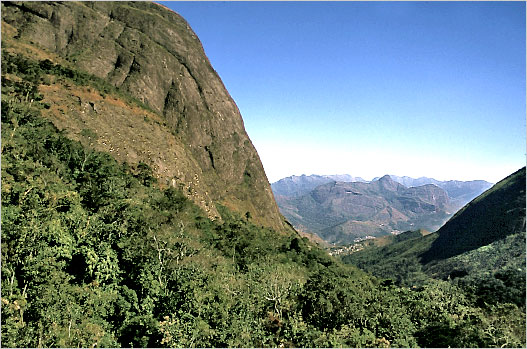 Petrópolis |
| ON:
Who participated in this project? David: Richard Warren is the editor and the botany, Helmut Seehawer, German, ex-pilot of Lufthansa, expert in Pleurothallidinae, he has a property in Macaé de Cima where he stays for 6 months a year. He entirely concentrated himself during 6 years to the study of this group. Alvaro Pessanha, botanical illustrator, Isabel and me. We received not only the collaboration of Marta Morais, from Botanical Garden of Rio de Janeiro, but also Maria do Rosário Almeida Braga, from Quinta do Lago Nursery. ON: Obviously, you have found a bigger number of species than in the survey you did for the first book. David: In the whole mountain, we found at about 620 species and between them, Helmut discovered 20 new species, mainly in the group of Pleurothallidinae. Out of this group, plants with little bigger flowers, I believe we discovered a half dozen, totaling between 20 and 30 new species. Besides, we calculated that, with the extinction in the anticline (in the direction of Paraíba do Sul river ), 350 species have disappeared. ON: They vanished for good or we can find them somewhere else? They would be endemic for this region? David: No. They can be found somewhere else. |
| ON:
In number of orchid species, which group is more frequent? Pleurothallidinae
of course, isn't it? David: Pleurothallis with more than 100, Octomeria, 70, Stelis, 35. Maxillaria more than Pabst mentioned for the region, at about forty species, Oncidium, 39, I think, Epidendrum between 30 and 40, Dichaea, more than a half dozen, I believe seven, Warmingia eugenii, Psilochilus modestus. Then there is a quantity of monotypic genera (it means with just one species):Ponera striata, Binotia brasiliensis. |
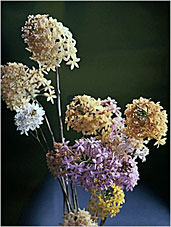
Epidendrum denticulatum |
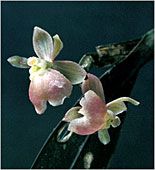 Epidendrum addae |
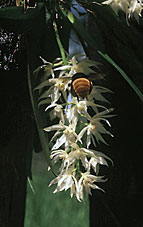 Warmingia eugenii |
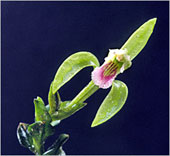 Psilochilus
modestus Psilochilus
modestus |
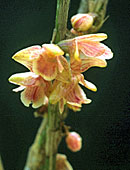
Ponera striata |
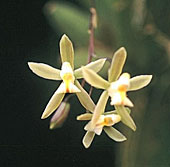
Binotia brasiliensis |
| Isabel: We also found many Cleistes, very beautiful. |
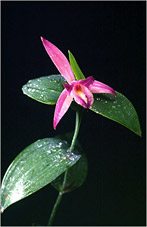 |
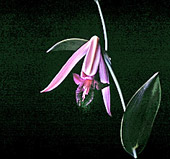 |
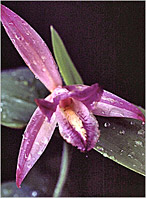 |
|
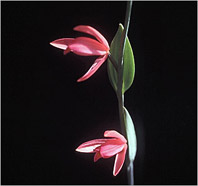 |
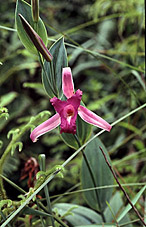 |
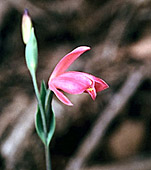 |
|
ON:
Fortunately, as it is a very hard genus, impossible to be cultivated,
people don't collect although it is really wonderful. |
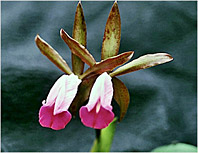 Cattleya dormaniana |
ON:
There is a register by Blunt as it occurring in Rio de Janeiro city, at
700m altitude. Do you think it is possible? David: It was found in Tijuca, it is possible, there is a strip of altitude, which can have a variation of 200m, absolutely perfect for Cattleya dormaniana, the light should also be perfect. We found it growing on a species of Clusia. |
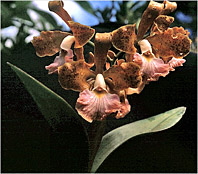 Cattleya velutina |
| I
think that Cattleya velutina has the same characteristic. ON: Have you come across to Cattleya velutina? David: We haven't but we saw a specimen that has been collected in Silva Jardim. There is around Lumiar where we didn't also found but we know some people who did. In a ridge between Nova Friburgo and Silva Jardim at 300m, someone found an enormous clump. We went there but someone, a true brigand, removed it to sell. We found nothing. So, we did, an interesting thing, we took a flask of Cattleya velutina and reintroduced there. ON: Have you see the result of this reintroduction? This is a very hard plant even in its habitat. Isabel: Yes, we have, they are doing very well. |